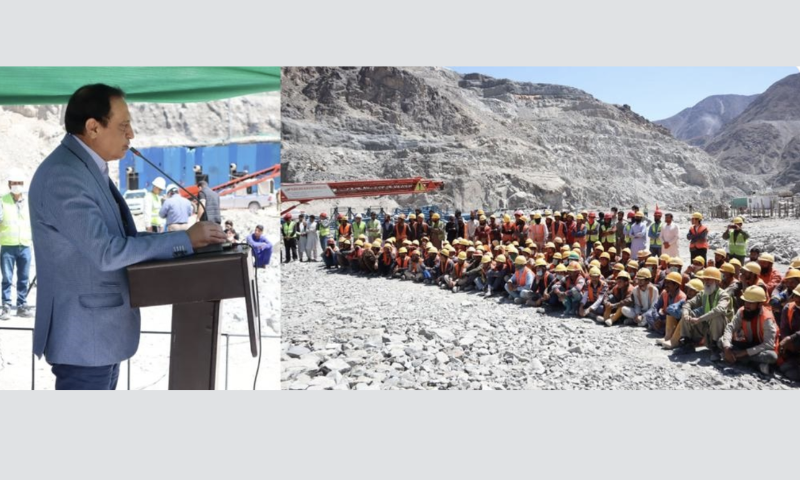ISLAMABAD: Chairman Water and Development Authority (WAPDA) Engr Lt Gen Sajjad Ghani (Retd) on Sunday visited the Diamer Basha Dam Project to review the river diversion system, which has been operational since last week after partial diversion of the River Indus at Diamer Basha Dam Project site.
The diversion system consists of a nearly one-kilometer-long diversion tunnel, a 0.857 Km-long diversion canal, and two coffers (starter) dams – one at upstream and a second at downstream of the main dam site, said a press release.
Last week, WAPDA succeeded in diverting the River Indus partially through the diversion system constructed for the purpose. Nowadays, the River Indus is flowing mainly through a diversion tunnel and diversion canal, while partly through its natural course.
Chairman WAPDA Ghani also reviewed construction progress on various sites of the project. CEO, GM/ Project Director Diamer Basha Dam, and representatives of the Consultants and the Contractors were also present during the Chairman’s tour.
The Chairman was briefed about the diversion system’s test run. The diversion canal and diversion tunnel both are functioning satisfactorily. At present, construction work is continuing smoothly on thirteen sites simultaneously; he was further briefed.
Diversion at Diamer Basha Dam
It is to be noted that WAPDA is ready to achieve the landmark of the Indus River diversion at the Diamer Basha Dam Project next week by plugging the upstream coffer dam. The river will, then, be flowing completely through the diversion system, bypassing the main dam site and rejoining its natural course after nearly a distance of eight hundred meters.
Diamer Basha Dam Project
The Diamer Basha Dam Project is being constructed on the River Indus, forty kilometers downstream of Chilas. This mega project is scheduled for completion in 2028. It has a gross water storage capacity of 8.1 MAF to irrigate 1.23 million acres of land. The power production capacity of the project stands at 4,500 MW, with annual energy production of eighteen billion units.

























